I couldn't believe my eyes when I saw this flawless fragment of Cordoue Wrought Leather.
Standing there starring at it, as if to say, "How did that land at a fleamarket?"
"Leather wallpaper is a type of wallpaper used in various styles for wall covering. It is often referred to as wrought leather. It is often gilded, painted, and decorated. With the advent of wallpaper use from about 1650-1750, leather was used to cover and decorate sections of walls in the habitations of wealthy persons. Leather is pliable and could be decorated in various ways."
The first time I saw cordoue leather was back in 1990 in the entrance hall of my 90-year-old neighbor's home in Marseille. Madame L. was gracious and her home was full of incredible Louis sixteen furnishings. As soon as I walked into her home my French antique history lessons started the moment my eyes asked, "What is this?" Standing in the entrance I was surrounded by leather cordoue depicting the four seasons, a few Louis sixteen armchairs, and a small chest of drawers with an Imari bowl filled with rock crystal decanter stoppers.
"Cuir de Cordoue, or cordwain or cordovan (meaning: "from Cordudo"), sometimes called gold leather (from Dutch "goudleer"), refers to painted and gilded (and often embossed) leather hangings, manufactured in panels and assembled for covering walls as an alternative to tapestry. These terms are mostly used for historical and antique materials."
Imagine the surprise I had to see this piece just hanging out with some books, CDs, second-hand no label brand clothes, and toys mostly plastic.
How in the world does that happen? Everyday actually. The old world ushers in the new leaving us a few traces of how it used to be.
No hashtags, no signature, no "I created this first", instead just a fragment of historical everyday beauty without a trace of who created it, nor what they did the night it was completed. If they were artisans they probably had a bowl of soup, some bread, a chunk of cheese, and a glass of wine.
Madame L.'s cordoue was donated to a museum I was told. But in my mind's eye, it is in the entrance hall where Chelsea (five months old) is sitting on the floor with the Imari bowl full of glass decanter stoppers putting them in her mouth, Madame L. is pleased that they are being used for something. (Her son, Father L., years later would celebrate the sacrament of marriage with Chelsea and Martin.)
Back at the flea market, I asked the vendor for his phone number.
I do not need this piece.
It is more expensive than everything gather at the fleamarket combined- books, CDs, second-hand no-label brand clothes,
and toys mostly plastic …
The vendor knows what this piece is.
I do not need it.
But gee the damn brocante just keeps biting.
At least I have some photos, a phone number and a new memory to attach to Madame L's lesson book.
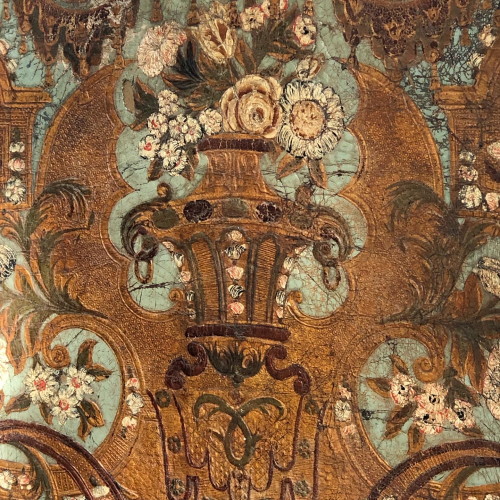
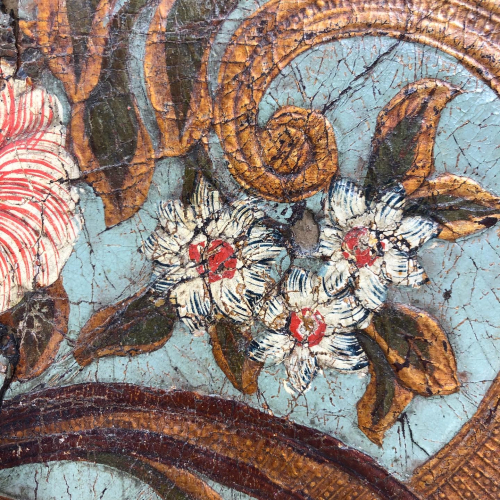
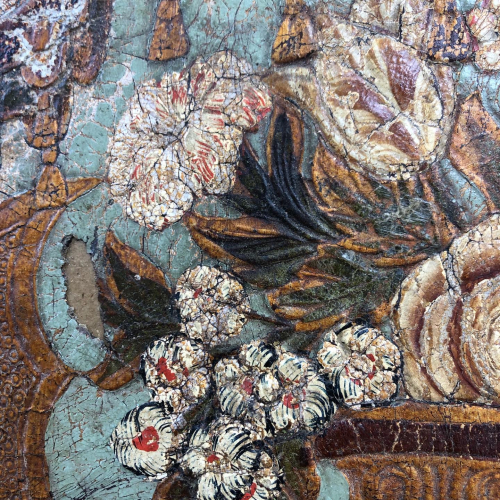
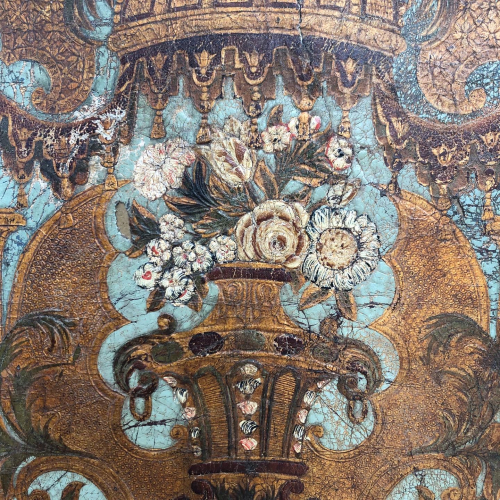

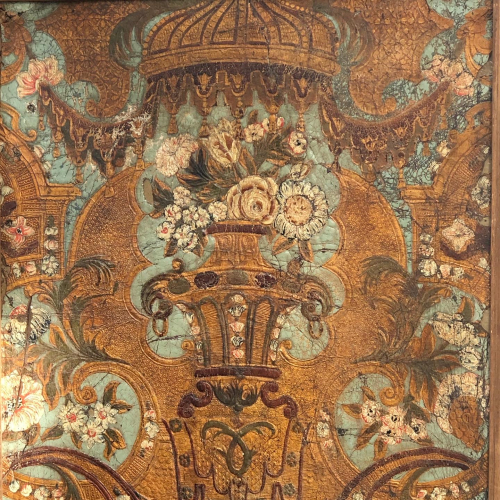

Leave a Reply